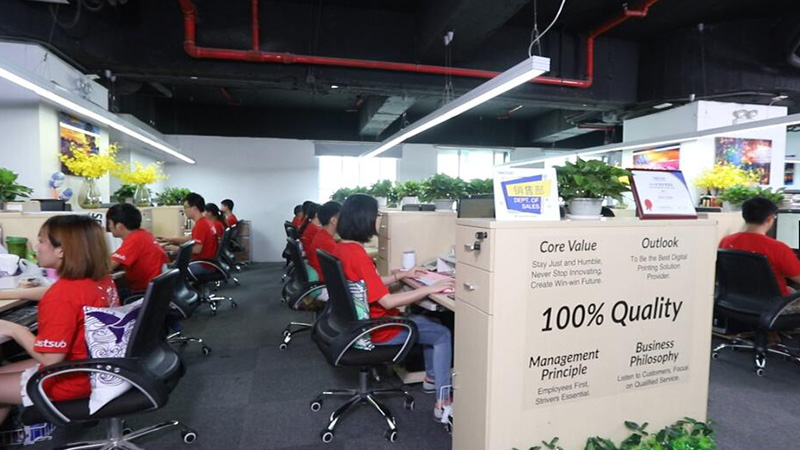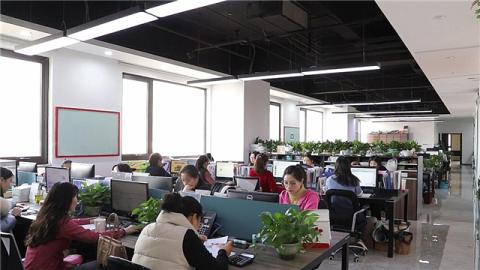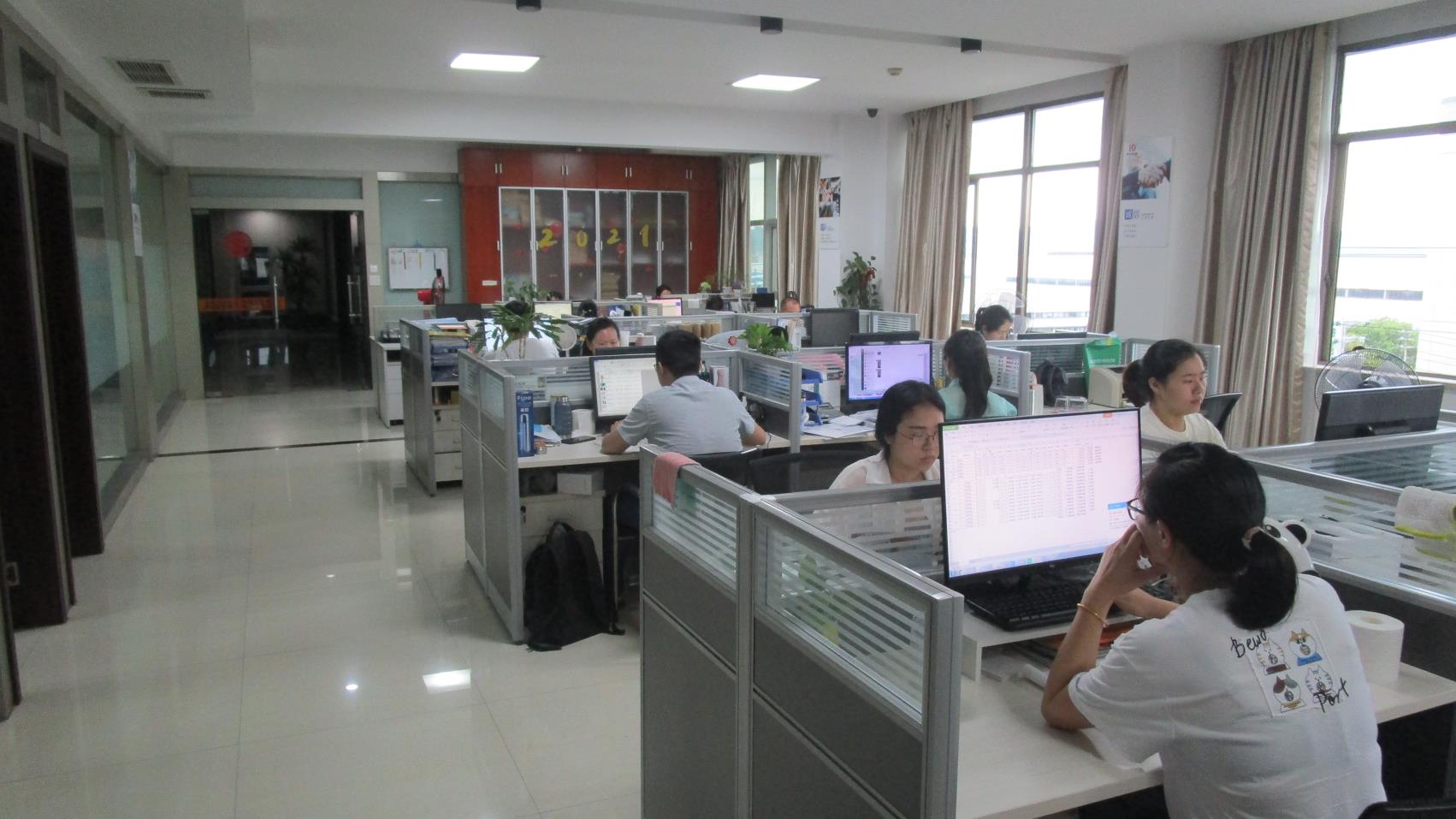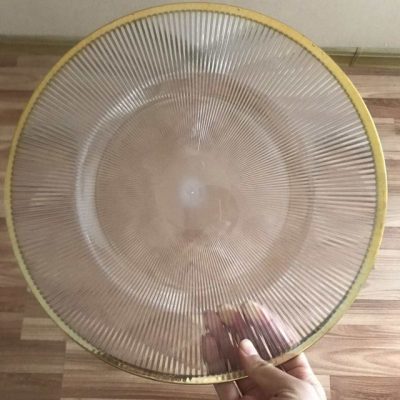
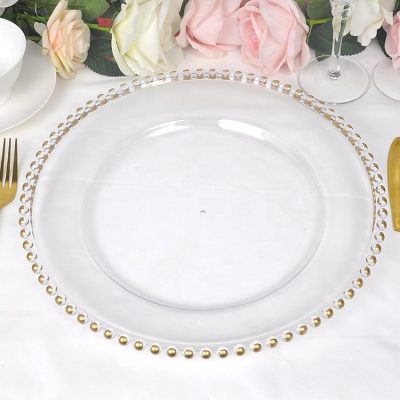
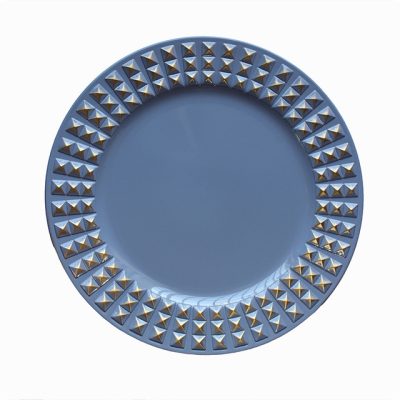
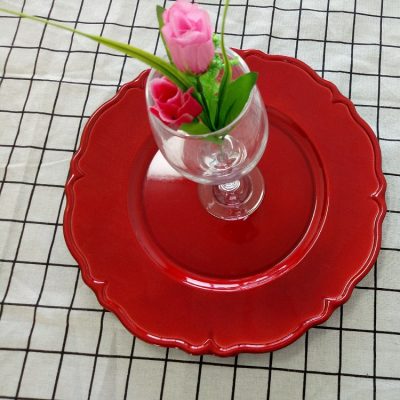
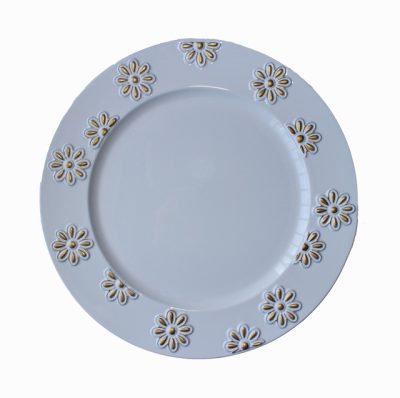
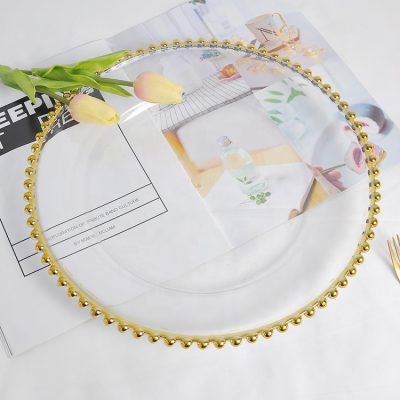
| Item | Acrylic Charger Plates |
| Description | Decorative Under Plates |
| Design | Beaded Rim |
| Size | 5*20cm |
| Weight | 76g |
| MOQ | 76pcs |
| Color | Clear with Gold/Silver/Clear/Rose/Black Beaded |
| Customized | Design according to client’requirement. |
| Packing | Bubble paper + outer carton |
| Leadtime | 5-10 days for sample, 20-30 days for bilk |
| Advantages | High quality, good price, fast delivery |
| Usage | Hotel Restaurant Home Wedding |
Acrylic, derived from English acrylic (acrylic plastic). The chemical name is polymethyl methacrylate. It is an important plastic polymer material developed earlier. It has good transparency, chemical stability and weather resistance, good hardness, easy dyeing, easy processing, and strong light transmission. , high printing adhesion, beautiful appearance, recyclable and other characteristics, have a wide range of applications in various industries. Acrylic has crystal-like transparency, the light transmittance is above 92%, the light is soft, the vision is clear, and the acrylic colored with dyes has a good color development effect. Acrylic sheet has excellent weather resistance, high surface hardness and surface gloss, and good high temperature performance. Acrylic sheets have good processing properties, and can be either thermoformed or mechanically processed.
Transparent acrylic sheet has light transmittance comparable to glass, but the density is only half of glass. In addition, it is not as brittle as glass, and even if broken, it will not form sharp shards like glass. The wear resistance of acrylic sheet is close to that of aluminum, with good stability and corrosion resistance to various chemicals. Its elongation at break is only 2%-3%, so its mechanical properties are basically hard and brittle plastics, and it has notch sensitivity and is easy to crack under stress, but the fracture is not like polystyrene and ordinary inorganic glass. So sharp and uneven. 40°C is a secondary transition temperature, which is equivalent to the temperature at which the side methyl group starts to move. Above 40°C, the toughness and ductility of the material are improved. Polymethyl methacrylate has low surface hardness and is easy to scratch.
The strength of polymethyl methacrylate is related to the stress action time, and the strength decreases with the increase of action time. The mechanical properties of the stretch-oriented polymethyl methacrylate (oriented plexiglass) are significantly improved, and the notch sensitivity is also improved. The heat resistance of polymethyl methacrylate is not high. Although its glass transition temperature reaches 104 °C, the maximum continuous use temperature varies between 65 °C and 95 °C with different working conditions, and the heat distortion temperature is about 96 °C. ℃ (1.18MPa), Vicat softening point is about 113℃. The heat resistance can be improved by copolymerizing the monomer with propylene methacrylate or ethylene glycol diester acrylate. The cold resistance of polymethyl methacrylate is also poor, and the embrittlement temperature is about 9.2 °C. The thermal stability of polymethyl methacrylate is medium, which is better than that of polyvinyl chloride and polyoxymethylene, but not as good as polyolefin and polystyrene. The thermal decomposition temperature is slightly higher than 270 °C, and its flow temperature is about 160 °C, so Has a wide melt processing temperature range.

